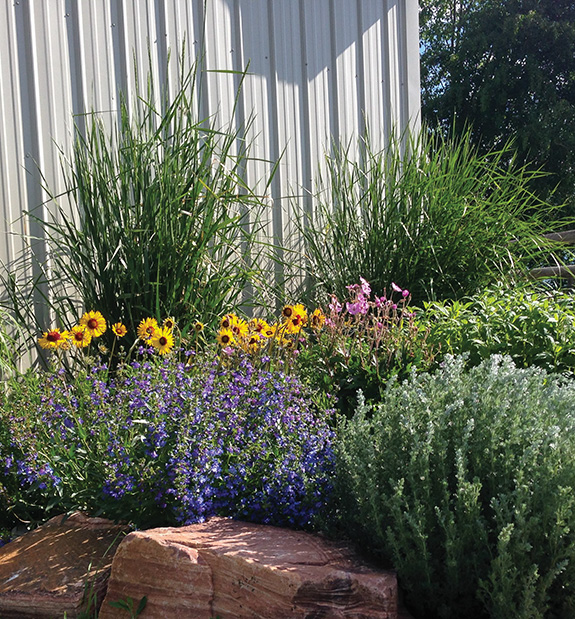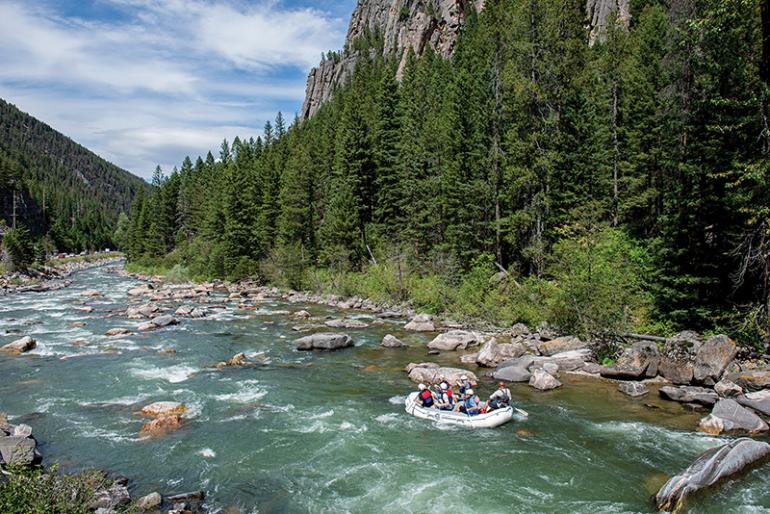Plant Me a River
Landscaping as an act of conservation.
As individuals concerned with the continuous depletion of our natural resources, we’re often asked to conserve in ways that seem ineffective. What difference does a recycled sheet of paper make when timber companies are clear-cutting old growth? And fuel-efficient cars when container after container of coal ships off to China every day? If big players like transnational corporations and state governments aren’t heeding the warnings of apocalyptic climate disaster, why should we?
One answer: it’s the right thing to do. Another answer: collective individual efforts on a large scale can have a real impact, especially when dealing with a local conservation issue, such as water supply in the upper Gallatin River. These efforts can go a long way to ensuring clean, clear water, essential habitat for the fish we so covet and the main ingredient in the rapids we run.
Without a supply of clean, cold water, the Gallatin is no longer the Gallatin.
Big Sky sits in a closed basin, meaning there is a finite amount of water available for human use. We draw water from underground aquifers that are replenished by snowmelt and rain, but as the snowpack decreases, those aquifers are drying out—rapidly, in fact. One way to prolong the water supply is through conservation, and one important conservation measure is decreasing the water we use for summer irrigation.
If we’re lucky, we get three months of summer in southwest Montana. In Big Sky, during those three months, residents use seven to eight times more water than in the other three-quarters of the year, even though winter visitation far outpaces summer. Why? Irrigation. We all want impressive lawns, from the greenskeeper at the golf course to the retirees in Town Center condos. And it isn’t just how much we water our lawns, but how we plan, manage, and maintain our lawns that contributes to water waste and ecological harm. Many of us plant sod, hoping for the classic suburban lawn of 1950s acclaim. But those grasses need intense amounts of water, fertilizer that contains pesticides, and constant time-consuming maintenance. They’re expensive and non-native, and they’re completely unnecessary.

There is an alternative that’s better for the environment, better for the recreation resource, better for your wallet, and even better looking. Landscaping with native plants vastly reduces water use, creates a drought-resilient landscape, and removes harmful chemicals from the watershed. It’s also cheaper and maintenance is less time-intensive. What’s more, the Gallatin River Task Force offers cash rebates for qualifying irrigation fixtures.
For the most part, plants adapted to the climate of southwest Montana require little to no additional watering. Natural precipitation does the trick. These plants are accustomed to dry summers and thrive when water is scarce. Perennials like blue flax and blanketflower are easy on the eyes, and they provide fuel and habitat for pollinators and other insects, which in turn provide fuel for species up and down the food chain.
This all leads to a healthier watershed and more water for the river, which at the end of the day is the whole point. From Yellowstone Park to Three Forks, the Gallatin is being pressured like never before. Even without dire climate predictions, the river’s water supply is not enough if we continue consuming at the current rate. The groundwater we consume for irrigation would otherwise bolster the river’s surface water.
In Big Sky, during those three months of summer, residents use seven to eight times more water than in the other three-quarters of the year.
Without a supply of clean, cold water, the Gallatin is no longer the Gallatin. Big Sky ceases to be Big Sky and even Bozeman is fundamentally altered. Imagine the river without a healthy trout population. Even if you don’t fish, that is a depressing thought and an unacceptable outcome. Imagine the Mad Mile without enough runnable whitewater for kayakers and rafters. Again, that future is no future at all.
Now, will converting your lawn to native plants and cutting back on irrigation make the water-supply issue go away? No, but it is a positive step, and it is something proactive individuals can do. Do big businesses and other intensive users need to do their part? Absolutely, and we can apply that pressure so that the Gallatin remains our backyard playground and the lifeblood of our communities.
Because Big Sky is the main consumer of the upper Gallatin’s supply, residents there bear most of the burden when it comes to water conservation, but habit shifts are necessary up and down the river’s course, and indeed across the West if we’re going to achieve a sustainable future. Maybe the most important aspect of a river-friendly lawn is the intentional decision making that goes into planting it. The homeowner or businessperson is thinking about impact, not taking the resource for granted.
If we all apply that perspective to more of our actions, we increase the changes of our children’s children catching a trout in Baetis Alley or successfully navigating a kayak around House Rock. Instead of creating a longshot, we reshuffle the deck and stack the odds a little more in our favor. At the end of the day, that is what all conservation is about—intentional restraint in the face of limited resources. It is a small price to pay for a clean, clear Gallatin, and it’s the right thing to do.
Emily O’Connor is the Gallatin River Task Force’s conservation project manager. Learn more about water-wise landscaping at gallatinrivertaskforce.org.











